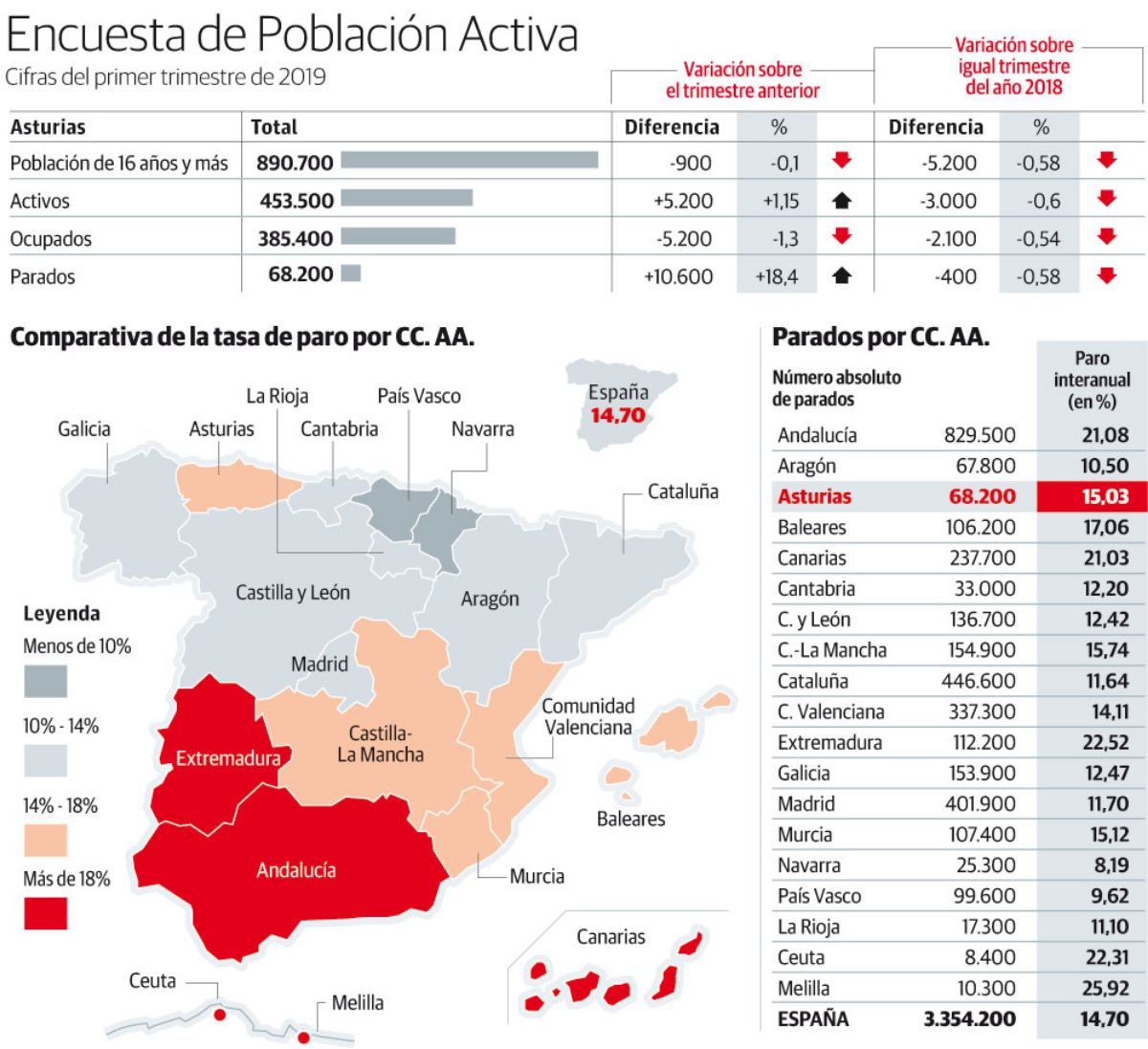
Have you ever heard of the EPA? Do you know what it is? It is the acronym for the Labor Force Survey, quite well known, but not many remember having participated in it.
If you want to know everything that the EPA includes, for what purpose it is done, how it works and how to understand it, then we give you the keys to do so.
What is EPA
As we have told you before, the EPA is the acronym for the Active Population Survey. It is a statistical study in which data on the labor market are collected and where the unemployment rate is calculated.
In other words, we are talking about a document that establishes the evolution of the labor market, separating the active population (worker) from the non-active (unemployed).
In case you don't know, the EPA has been in place since 1964 and the objective is to know the state of the population, that is, if they are busy, active, unemployed or inactive. But it is not done to the millions of Spaniards, but only to a sample of some 65000 families each quarter. In other words, 200000 families are "interviewed" per year.
Many experts rate it as "Best indicator to know the evolution of employment and unemployment", Although others think that it has become obsolete, in addition to the fact that it is not possible to know if the data is real, especially in the case of work in B or situations in which the person works but is not formalized (remains unemployed but works) .
Key EPA Concepts
To understand the results that come out of the EPA, it is necessary to take into account several key concepts that determine which group each person is in. These are:
On going
It would be about people who are 16 or older and who are available for workbut they haven't found a job yet.
However, they are actively looking for a job to enter the labor market.
Busy
They are people, also 16 or over, who are currently with a job. That is, they contribute to the labor market with their work in exchange for remuneration.
In turn, these people are divided into employed workers (which are separated into public and private), and own-account workers (who would be self-employed, entrepreneurs without employees, employers, etc.).
Another classification that is taken into account is whether the person works full-time or part-time.
Unemployed
This group would include the people 16 or older who are currently unemployed, are available and actively looking for a job.
Why are they considered unemployed and not active? Well, because they go through any of the following conditions:
- They have gone to a public employment office to find work.
- They have gone to a private employment office looking for work.
- They are active in submitting their application for possible jobs.
- They have responded to job postings.
- They have participated in personnel selection procedures.
- They are looking to undertake.
- They have a job that they just wait to join.
Inactive
Finally, the inactive are considered by the EPA as people aged 16 or over that are not included in the other categories.
In reality, they would be people who do not have a job but are not looking for it either.
What is the purpose of the EPA
As established in the Labor Force Survey, the objectives pursued by the EPA are:
«Know the economic activity in relation to its human component. It is aimed at providing data on the main population categories in relation to the labor market (employed, unemployed, active, inactive) and to obtain classifications of these categories according to various characteristics. It also makes it possible to make homogeneous time series of results. Finally, as the definitions and criteria used are consistent with those established by international organizations that deal with labor issues, it allows comparison with data from other countries.
Detailed results are obtained for the national group. For the autonomous communities and the provinces, information is offered on the main characteristics with the degree of disaggregation allowed by the coefficient of variation of the estimators ”.
In other words, its purpose is to know which population group is active, employed, unemployed and inactive.
As elaborated

To understand how the EPA works, the first thing you should know is that The criteria that follow are those defined by the International Labor Organization (ILO). As we have told you before, it is carried out quarterly to a population group of 65000 families. The ages must be between 16 and 74 years. All people of these ages are "obliged" to collaborate by giving truthful information.
Now, if all the people in the family refuse that first interview, then that family group can be replaced by another. But if this happens after that first interview, then it will be insisted that they respond after a while (in the next three quarters).
Does that mean we can deny ourselves? Yes, always in the first interview and with a unanimous refusal from the whole family. Of course, you have to fill out a negative questionnaire.
Those who do accept the interview go through a series of surveys. The first of them is carried out in person and in person, carried out by interviewers from the INE (National Institute of Statistics) while the others can be done in person or by telephone).
To do this, each person is asked to have as reference period the week before the interview.
The data is always made public at the end of the months of October, January, April and July, offering detailed data on the population.
As you can see, what the EPA is is easy to understand. In fact, throughout our lives it is possible that, at some point, you have found that you have been selected by the INE to be part of the Labor Force Survey, do you remember that moment? What kinds of questions did they ask you? Would you collaborate with her again?

